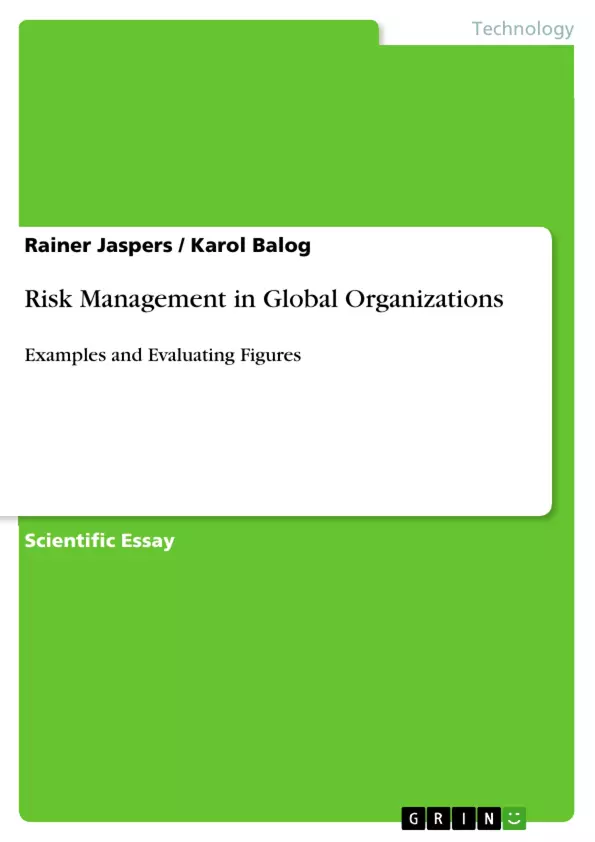In case of an unpredictable event, circumspect and aimed action is asked. In advance, goal-oriented precautions have to be met to represent information-streams and to enforce training - and education-measures.
In the event-case, the effect as well as the size of damages can be minimized at persons, real values, the environment and the neighbourhood. The reputation of the company, its co-workers, business partners as well as the authorities and the population will be persistently and positively influenced by positive and clear directed action.
The management has to fix business-politics and define a lasting risk-strategy that has to be com-municated to all co-workers. It is even though important that the goals are precisely and unequivocally defined in the business lines, not compete together and doesn't stand in conflict to each other. For the achievement of the strategic goals, it is decisive that the appointed goals are marketable and realizable.
In order to shape the control of the goals more efficiently and effectively, it is necessary that these are quantifiable.
Goals have to be fixed in writing and known to all co-workers.
The prerequisite for the success of the system lies in the managements built up and past life risk-culture of the total business operation.
Inhaltsverzeichnis (Table of Contents)
- Risk as Term (references, purpose, identification)
- Risk Analysis (production sites/processes)
- Risk Assessment (weighting risks, occurrence likelihood, causes)
- Risk Management/Risk Monitoring (chances, actions and output verification)
- Guidelines for Risk Management Integration
Zielsetzung und Themenschwerpunkte (Objectives and Key Themes)
This text aims to provide a comprehensive overview of risk management in global organizations, focusing on the identification, analysis, assessment, and management of risks.- The definition and significance of risk in the context of global businesses
- The underlying causes and purpose of risk management
- The identification and classification of various risks within the steel industry
- The integration of risk management throughout all levels of a company's hierarchy
- The importance of a proactive approach to risk management.
Zusammenfassung der Kapitel (Chapter Summaries)
- Risk as Term: This chapter defines risk as a potential negative deviation from planned events, impacting a firm's ability to achieve business goals. It emphasizes the importance of proactive risk management in a globalized marketplace.
- Risk Analysis: This chapter delves into the process of analyzing risks within production sites and processes. It examines the various factors that can contribute to risk and the need for comprehensive assessment.
- Risk Assessment: This chapter focuses on the systematic assessment of identified risks. It explores methods for weighting risks based on their likelihood of occurrence and potential impact, aiming to prioritize mitigation strategies.
- Risk Management/Risk Monitoring: This chapter outlines the essential steps involved in managing and monitoring risks. It discusses the identification of opportunities, the implementation of action plans, and the verification of outcomes.
- Guidelines for Risk Management Integration: This chapter provides practical guidelines for integrating risk management across all levels of an organization. It emphasizes the importance of a cohesive approach to risk mitigation and control.
Schlüsselwörter (Keywords)
The text focuses on the core concepts of risk management in a global business context. Key areas of focus include risk identification, analysis, assessment, and management. The text also highlights the need for comprehensive risk mitigation strategies, proactive planning, and the integration of risk management into all aspects of a global organization.- Quote paper
- Dipl.Ing. Rainer Jaspers (Author), Karol Balog (Author), 2012, Risk Management in Global Organizations, Munich, GRIN Verlag, https://www.grin.com/document/195238



